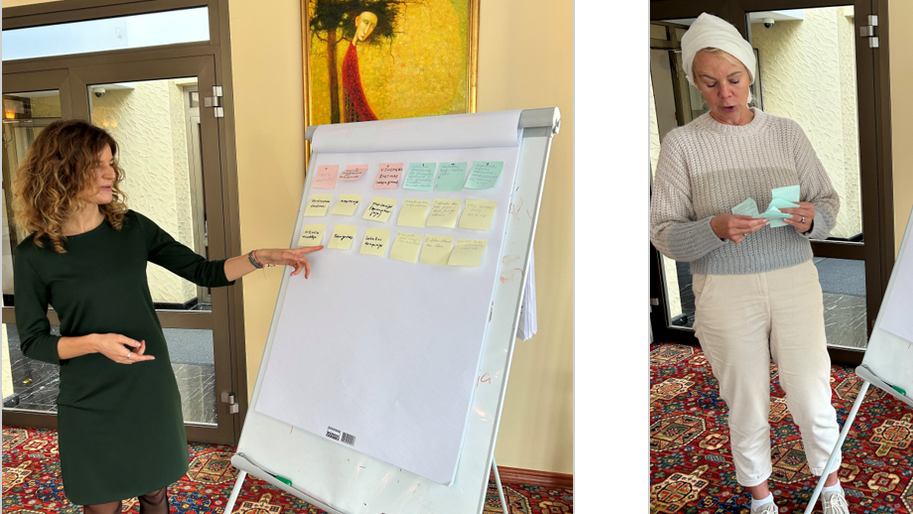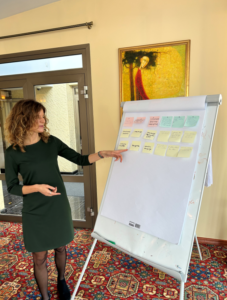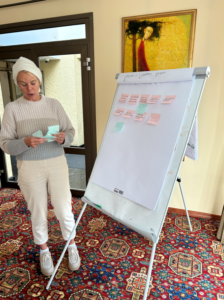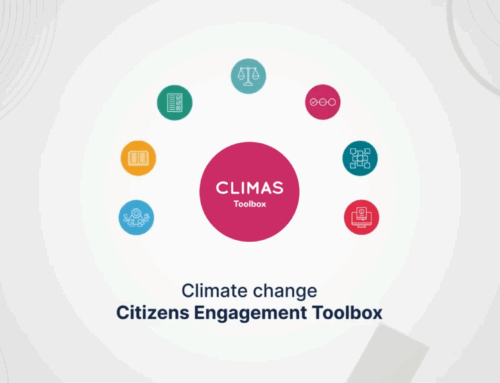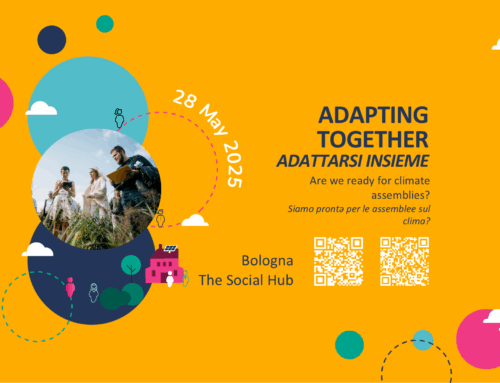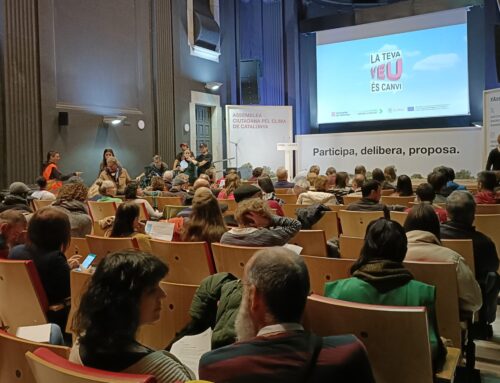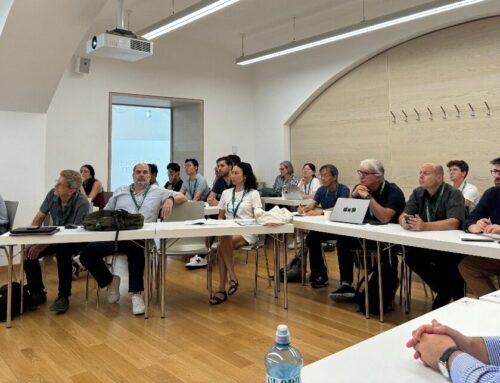This article aims to briefly present the contents of the Future scenario-building workshop conducted on 8 October 2023. This piloting activity took place at the Vilnius Living Lab and hosted by VILNIUS TECH in cooperation with Vilniaus Planas. The article includes
- Preliminary preparation
- Participants’ selection
- Details of the discussions
- Conclusion
The workshop aimed to create and analyse alternative visions of the future of climate resilience to influence social innovation policies. It focused on long-term developments within 10-30 years and used the scenario building as a key method, developed by our partner VUB.
1. Preparation for the workshop
The initial phase prior to implementing the Future Scenario-Building workshop involved intensive planning and preparation. This section examines the steps that were taken, guided by the structured guidelines provided by VUB. Each element was considered as described below:
- Step 1: Guidelines received. Preparation for the Future Scenario-Building workshop commenced with the reception of detailed guidelines, focusing on collaborative future scenario construction with citizens.
- Step 2: Clarification the objectives. The team conducted a thorough review of the guidelines to identify areas requiring further clarity and potential implementation challenges. This review led to the formulation of questions directed to Havva Ebrahimi Pour, the point of contact with VUB.
- Step 3: Team discussion on approach. The team initiated discussions to define objectives, assign responsibilities to team members, identify stakeholders, select participants, and develop a well-structured agenda. These discussions provided a solid foundation and strengthened team unity.
- Step 4: Development supplementary material. The team developed a set of supplementary materials to enrich the workshop. The team intended these materials to inform and engage participants. They include information sheets, a workshop guide, and a scenario building strategy. Consequently, the strategy includes choosing the right tools, involvement and stimulating questions to encourage discussions specifically in the Vilnius Living Lab audience.
- Step 5: Recruiting participants. Three steps form the approach to recruit participants. First, the team identify potential participants by compiling a list of individuals with different perspectives. Next, the team formulate customized invitations to emphasize the importance of each invitee. Finally, preliminary task information was provided to participants.
- Step 6: Setting up the scene. The team realised the workshop by paying close attention to ambience and atmosphere (organising the distribution of participants in a semicircle within an accessible venue). In addition, the team provided technical equipment and a refreshment area for breaks. Their aim was to foster an environment in which participants would feel comfortable, valued and inspired.
2. Participants’ selection
The workshop intentionally included participants from a wide range of backgrounds to ensure a comprehensive perspective. Consequently, the team’s intention was to gather multiple points of view and ideas from multiple stakeholder groups. In fact, the essence of each participant ensured the uniqueness of the various workshop discussions.
Not only the participants animated the discussions themeselvs, but they were also supported by 4 facilitators from VILNIUS TECH and Vilniaus Planas.
Below the list of participants’ from different stakeholder groups and respective affiliations:

Figure 2. Anonymous list of participants with their respective affiliations.
3. Minutes of the workshop
3.1 Welcome, Warm-up and Agenda
The objective was to welcome the participants and then provide them with a comprehensive overview of the day’s agenda to clarify the objectives they were aiming to achieve. In addition, the coordinator Aelita Skaržauskienė (representative of VILNIUS TECH) presented the objectives and approaches of the CLIMAS project.
And finally, G. Gulevičiūtė (VILNIUS TECH) presented the Future Scenario-Building workshop method. He emphasised the power of this tool in involving participants in realising the vision of a resilient future and ways to achieve it. The participants then had to introduce themselves to each other. This was done through an activating question: “Have you ever experienced any extreme weather events that made you think about the importance of building a climate-resilient society? How do you think we can better prepare for such events in the future?“.
3.2 Identification of key drivers / Critique phase
The critique phase is a key entry point for participants in the scenario building process. The consequent objective is to foster active participation in scenario building challenges. Participants have to identify the factors that will influence the future of the topic under consideration. This phase is expected to open the dialogue, initiate an exploratory analysis of the target of study related to a climate-resilient society, and have the groups define the main drivers.
For this reason, the team divided the participants into two groups, ensuring diversity in terms of gender, occupation, age, and stakeholder group. We assigned two facilitators to each group. Each group was assigned two facilitators. Participants and facilitators collaborated using methods such as STEEP and brainstorming, then presented their findings in a plenary session. The entire group filtered these results to create a final list of factors, including topics such as public education, target group education, urban infrastructure, renewable energy, pollution control, employee engagement citizens, political decisions and community initiatives.
- Figure 3. A photo of the team 1 presentation
- Figure 4. A photo of the team 2 presentation
3.3 Scenario envisioning phase
At this stage, the objective was to develop a series of future scenarios using the main factors defined above. Therefore the team would have to develop scenarios that reflected the uncertainty and complexity of the future in a comprehensive and coherent way.
What were the expected results?
The workshop aimed to create 4 or 5 future scenarios. In fact, the facilitators explained the task to the various groups, highlighting the need to work on 3 key factors and to develop at least 2 scenarios for each of these factors. The medium used was that of the “morphological box“, that is, a method that allows you to explore and generate different combinations of factors or drivers to create diversified scenarios.
Finally, the groups chose to develop scenarios based on 3 key factors by combining specifications from the “morphological box”. Indeed, these scenarios represented possible futures deriving from the combination of different elements.
The results of each group i.e., morphological boxes, are presented below:
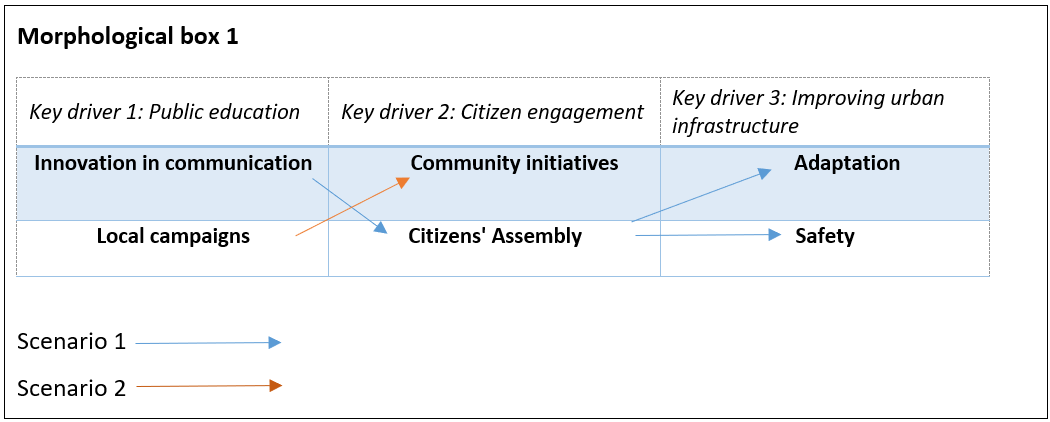
Figure 5. Morphological box of the team 1
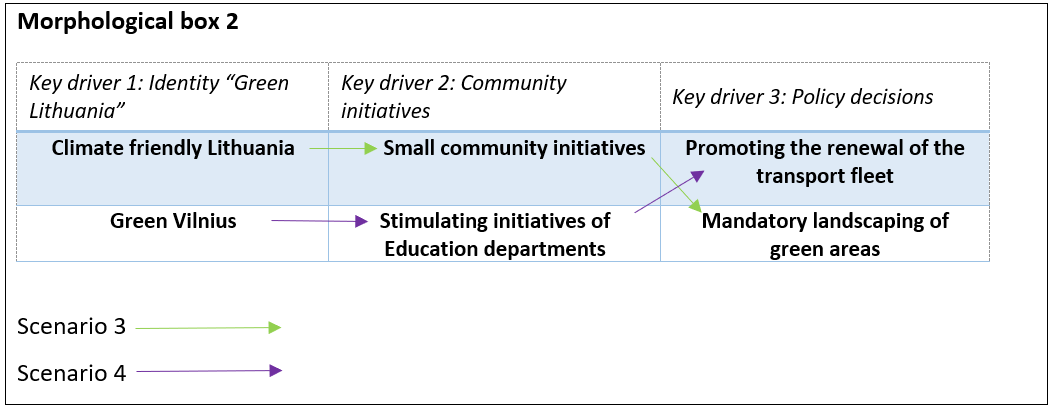
Figure 6. Morphological box of the team 2
3.4 Identifying and drafting evaluation quality criteria for scenario
The objective of this phase was to identify and define the criteria for evaluating future scenarios. Consequently, these criteria had to be consistent with the objectives and specific context of the scenario building exercise. In particular, we expected to obtain as a final result a list of up to 10 weighted evaluation criteria.
The groups worked to identify these criteria based on the objectives presented by the facilitators. In fact, each group then presented the criteria to be weighed and finalized. Finally, the eight common evaluation criteria included relevance, adaptability, engagement, inclusivity, sustainability, tangibility, motivation and sharing.
These criteria aim to evaluate future scenarios by responding to local needs and promoting sustainability, adaptability and inclusion.
3.5 Conclusion
The last step was to wrap up the session and explain the next steps.
First, Monika Mačiulienė presented a summary and review of the workshop results. Subsequently, information was provided to the participants regarding the future construction of the scenarios, including a survey for scenario prioritization.
4. Conclusion
In conclusion, it can be highlighted that the workshop led to valuable insights, but also required improvements:
- Time management: a more detailed division of time is necessary to avoid fatigue.
- Participant Fatigue: the prolonged duration led to a loss of enthusiasm. It would be useful to organize a longer workshop with breaks to reinvigorate the participants.
- Clarity of modules: some segments of the workshop were not clear enough. The team should explain each module in a detailed and understandable manner.
- Scope of scenarios: participants mainly developed scenarios at the national level, while they could encourage global perspectives.
- Positives: despite the challenges, participants left the workshop with a renewed sense of purpose, eager to incorporate environmental considerations into their professional and personal endeavors.
The workshop has taken a step in the right direction, but can undergo further improvements for future developments.
Follow us on LinkedIn, and Twitter, or subscribe to the newsletter to stay updated with the latest activities!
